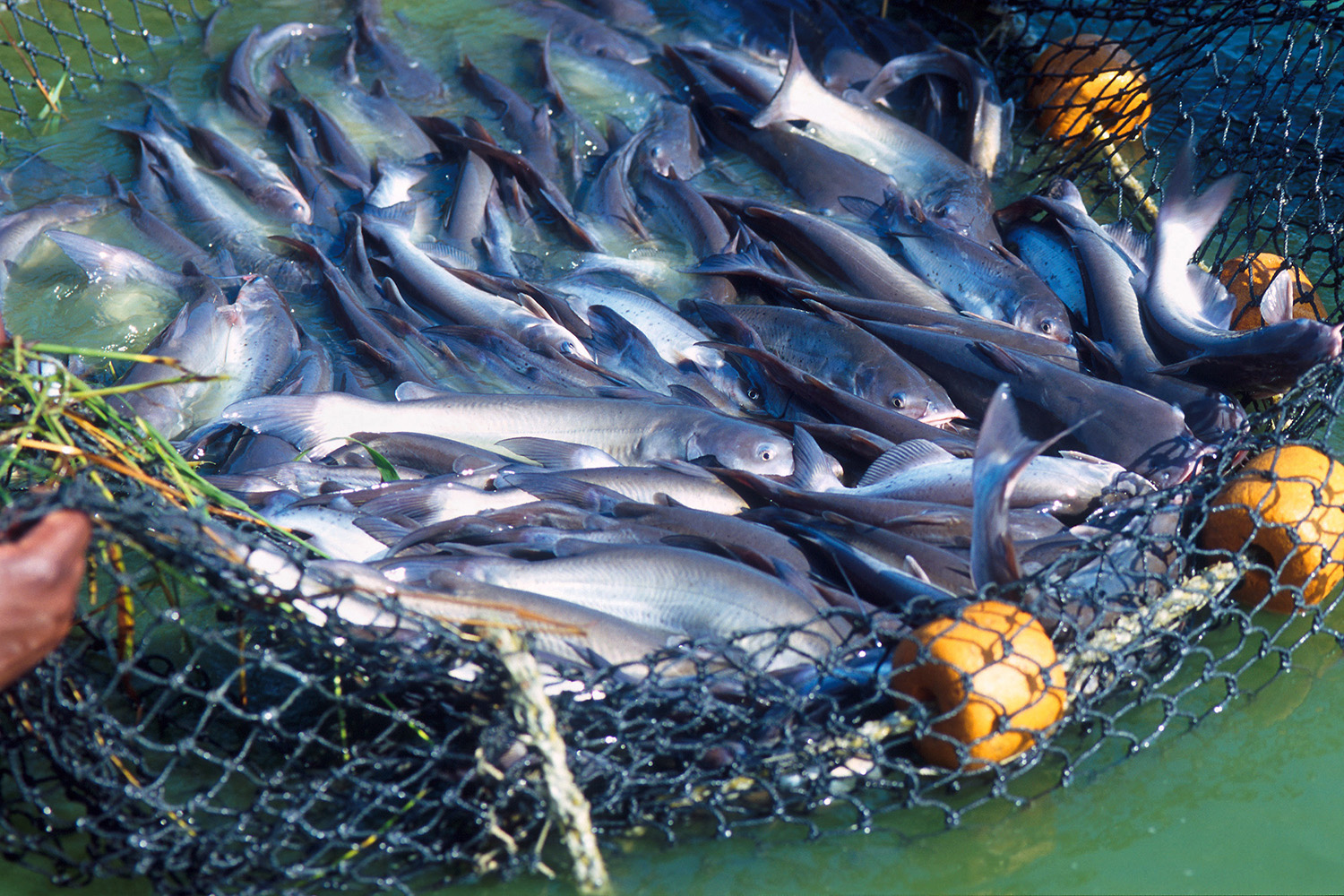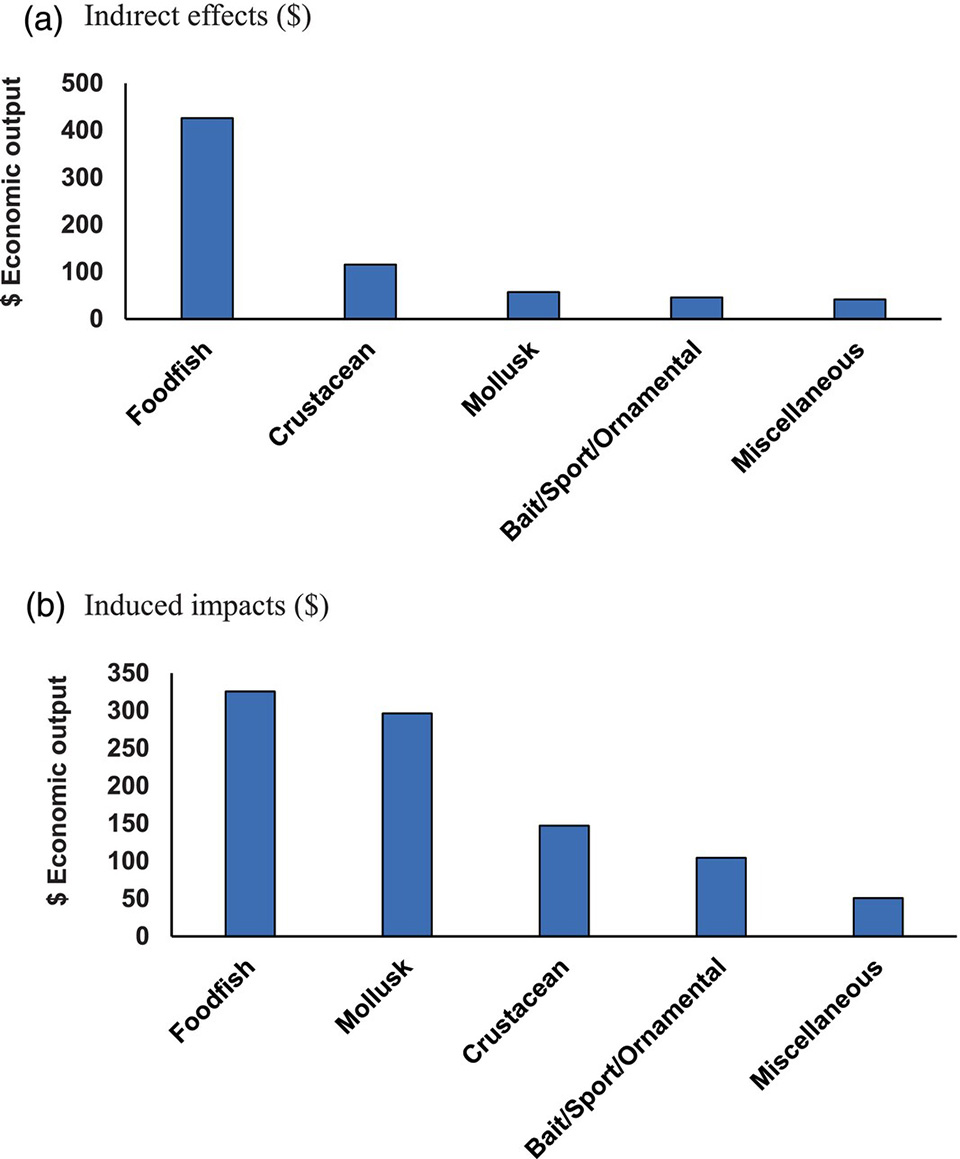The total economic impact of U.S. aquaculture production likely 3-4 times greater than farm-level impacts

A recent study by Dr. Ganesh Kumar and co-authors involving aquaculture researchers from 11 different institutions and published in the Journal of the World Aquaculture Society discusses the economic contributions of aquaculture in the United States, and the linkages of aquaculture farming businesses with other economic sectors and how policy decisions that affect aquaculture result in economic ripples throughout local, regional, and national economies.
“U.S. aquaculture farms are highly diversified raising multitudes of species ranging from various foodfish, mollusks, crustaceans, baitfish, sportfish, ornamental fish and other aquatic plants and animals,” Dr. Ganesh Kumar, associate research professor at Mississippi State University and lead author of the study, told the Advocate. “The annual contribution of domestic aquaculture farms to the U.S. economy has not been estimated since 1996, and we employed primary farm-level data on expenditures and outputs to develop economic impact of U.S. aquaculture. Results of this research show that U.S. aquaculture farms contribute about $4 billion and support over 22,000 jobs annually.”
The National Marine Fisheries Service (NMFS) annually publishes estimated economic impacts of wild-caught seafood landings and imports of seafood into the United States. However, these estimates do not include the impacts from domestic aquaculture production because adequate and relevant information on expenditures has not been available. With U.S. aquaculture production accounting for approximately one-fifth of the value of total U.S. seafood production, the inclusion of domestic aquaculture is critical for accurate representation of the contributions of seafood to the U.S. economy.
The only previous national estimates of the economic contributions of U.S. aquaculture are nearly 30 years old. The current study was based on comprehensive data from detailed farm-level surveys (that captured 77 percent of the total value of U.S. aquaculture) supplemented by information from publications on the remaining aquaculture sectors. The economic contributions measured in this study were limited to those at the farm level and do not include subsequent impacts that occur as farmed products move through processing, distribution, food service, and retail sectors in the U.S. economy.
Economic analysis of U.S. aquaculture is challenging because of the diversity of species and production systems across the country. U.S. aquaculture farms produce hundreds of different freshwater and marine species of finfish, shrimp, crawfish, shellfish, seaweed, and other species in a wide variety of production systems. Moreover, U.S. aquaculture is dynamic in that farming practices continue to evolve quickly as new and improved technologies are developed.
Seafood loss and waste rate in the United States is half of previous estimates
A further complexity of U.S. aquaculture is that costs and expenditures vary regionally across the United States. With aquaculture farms located in nearly every state, data used to estimate economic impacts must be sufficiently robust to accurately represent national expenditures and outputs.
“The majority of the jobs created are rural employment signifying the economic relevance of U.S. aquaculture farms,” said Dr. Kumar. “Labor income and value addition generated annually were approximately $1 billion and $3 billion, respectively. The diverse contribution from various aquaculture species, production systems, and regions resulted in economic linkages to over 96 percent of existing U.S. economic sectors. The study also reiterates the importance of the need for more streamlined U.S. aquaculture regulations that would enhance cost efficiency and productivity on farms.”

Analysis of the linkages of U.S. aquaculture production activities with other economic sectors showed that foodfish farms generated the greatest contributions, followed by mollusk farms. Freshwater aquaculture farms contributed twice that of the contributions of marine aquaculture because of the greater size of the freshwater aquaculture sector. The economic output multiplier across all U.S. aquaculture production was 1.73. Nearly all (96 percent) economic sectors in the United States were supported by U.S. aquaculture, with the majority of this contribution occurring in the rural economies where most production sites are located.
U.S. aquaculture includes farmed production of more than 1,500 species that are raised in various production systems with different gear types and management practices. Such diversity results in expenditure patterns that differ widely among species raised, production systems, and gear types that are linked to and support different sectors of the economy. The magnitude of the economic contributions is affected not only by the volume of expenditures but also the number of sectors supported.
Results of this study were limited to impacts from farm-level expenditures because robust datasets were not available beyond the farm level for all U.S. aquaculture sectors. Thus, downstream impacts from processing, distributors, food service, and retail sectors were not estimated for food products from farmed finfish and shellfish production. Also not included were the downstream impacts from anglers and first-point buyers of fish from farms that supply baitfish and sportfish (including trout sold for recreational purposes) or from marketing levels in ornamental sector supply chains. These downstream sectors can make substantial economic contributions beyond those of farm-level expenditures.
The growth of aquaculture in the United States has been constrained by the regulatory framework that has restricted the growth of existing aquaculture sectors. The current size and economic contributions of U.S. aquaculture could be substantially greater than its current size if regulatory constraints would be streamlined and implemented in a more timely and efficient manner. Development of clear property rights and permitting processes for marine waters would support growth of marine aquaculture, particularly of marine finfish that would benefit coastal communities and working waterfronts.
“Given the aquatic resources of the United States, both freshwater and marine, there is substantial potential for growth of U.S. aquaculture that would enhance its economic contributions to communities and consumers across the United States “concluded the study authors.
Now that you've reached the end of the article ...
… please consider supporting GSA’s mission to advance responsible seafood practices through education, advocacy and third-party assurances. The Advocate aims to document the evolution of responsible seafood practices and share the expansive knowledge of our vast network of contributors.
By becoming a Global Seafood Alliance member, you’re ensuring that all of the pre-competitive work we do through member benefits, resources and events can continue. Individual membership costs just $50 a year.
Not a GSA member? Join us.



